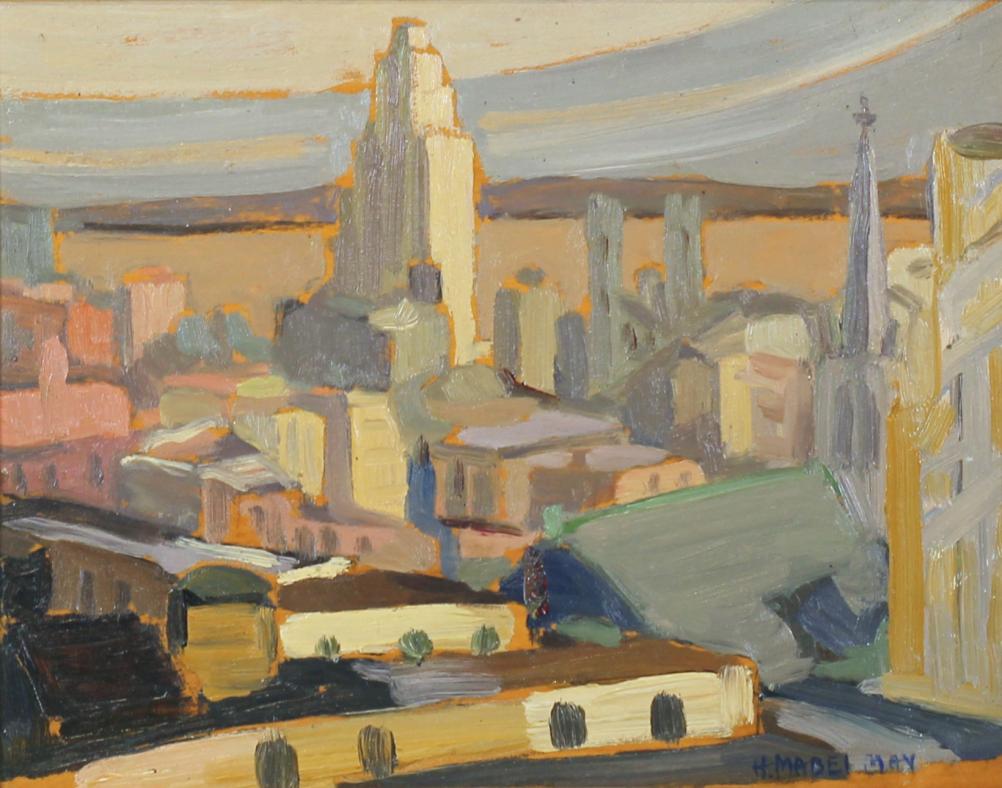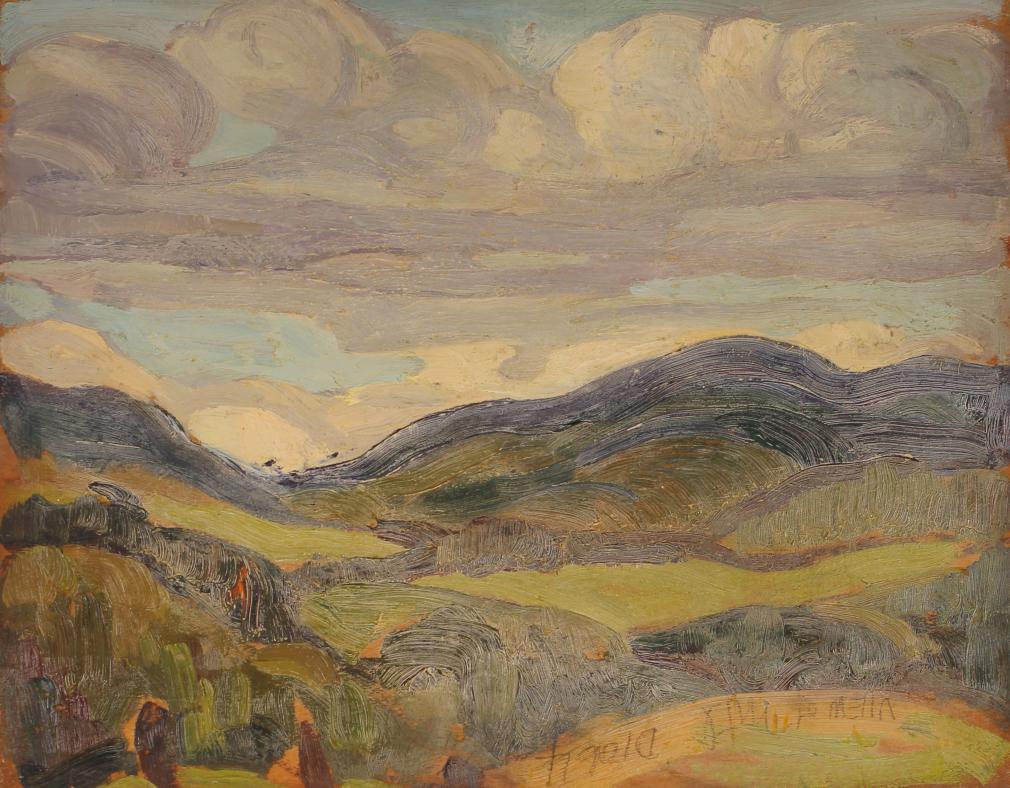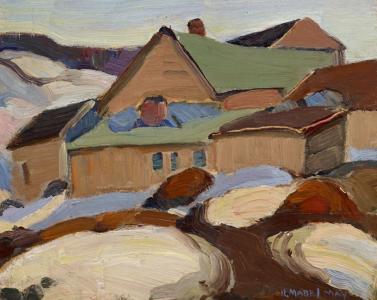Henrietta Mabel May - View of Montreal
- View of Montreal
- Oil on Board
- 8.5 x 10.5 in
- 1932
- Sold
- Loch Gallery, Calgary
Doubled Sided Oil on Board
signed, and on verso titled
From the collection of Gale and Henry Beaumont
Mabel May (1877-1971), born in Verdun, Quebec, was the daughter of Evelyn Henrietta Walker and Edward May, a prominent real estate developer and mayor of Verdun. She spent her early years in Verdun before moving to the upscale Westmount neighborhood. In 1902, Mabel was among the first students at the Arts Association of Montreal. She postponed her education to care for her nine younger siblings but later studied under William Brymner from 1909 to 1912.
A pivotal trip to France, England, and Holland in 1912 with Emily Coonan introduced Mabel to the Impressionists, significantly influencing her artistic style. Upon returning to Montreal, she established a studio at 745 St. Catherine Street West and painted during summers at the family cottage in Hudson. Anne Savage noted her return from France as "radiant," reflecting her vibrant spirit.
The Great Depression forced Mabel to sell the cottage and turn to teaching for income. She held sketching classes in the Eastern Townships and taught art history at Elwood, a private girls' school in Ottawa. From 1938 to 1947, she led the popular "Happy Art Class" at the National Gallery. In 1948, Mabel returned to Montreal, teaching privately until 1950, then moved to Vancouver to be near her sisters. The Toronto Star likened her to the "Emily Carr of Montreal." She continued painting and teaching until her death in Vancouver on October 8, 1971, at age ninety-four.
Mabel May's work includes lively landscapes from the Eastern Townships, New England, and Baie St-Paul. During World War I, she was commissioned by the Canadian War Memorials Fund to depict women in munitions factories, earning $250 a month. Her early works exhibit Impressionist influences, while her post-1920 landscapes show the influence of the Group of Seven. Art critic Albert Laberge praised her originality and strong use of color. Her later works became more linear and rhythmic, with simplified color palettes.
In 1915, Mabel was elected an associate of the Royal Canadian Academy. She co-founded the Beaver Hall Group in 1920 and the Atelier in 1931 and was a founding member of the Canadian Group of Painters in 1933. She received honorable mention in the National Gallery's Willingdon Arts Competition in 1929. The National Gallery acquired several of her works between 1913 and 1924, with more purchases later. From 1938 to 1947, she exhibited with Le Caveau, and in 1952, the Vancouver Art Gallery held a retrospective show featuring one hundred of her paintings.
Mabel May's vibrant and energetic contributions to Canadian art continue to be celebrated, ensuring her legacy remains influential and revered.
More Artwork from this Artist
Houses in Winter
- Oil on Panel
- 8 x 10 in
- Price available on request


